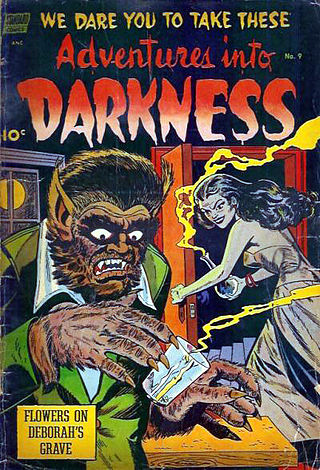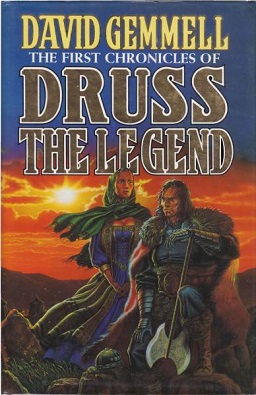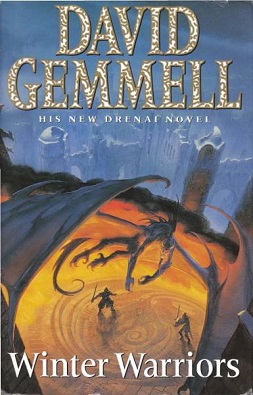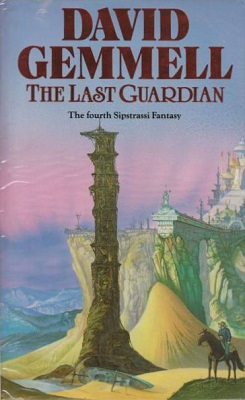
David Andrew Gemmell was a British author of heroic fantasy, best known for his debut novel, Legend. A former journalist and newspaper editor, Gemmell had his first work of fiction published in 1984. He went on to write over thirty novels. Gemmell's works display violence, yet also explore themes of honour, loyalty and redemption. There is always a strong heroic theme but nearly always the heroes are flawed in some way. With over one million copies sold, his work continues to sell worldwide.
Stephen Hunt is a Canadian writer known for his fantasy novels including the Jackelian series, which contains elements of steampunk and whose central setting is a nation resembling Victorian England, named the Kingdom of Jackals. Influences on his work include Jack Williamson, Stephen Goldin, David Gemmell, Bruce Sterling, Larry Niven and Michael Moorcock.

Warhammer Fantasy is a fictional fantasy universe created by Games Workshop and used in many of its games, including the table top wargame Warhammer Fantasy Battle, the Warhammer Fantasy Roleplay (WFRP) pen-and-paper role-playing game, and a number of video games: the MMORPG Warhammer Online: Age of Reckoning, the strategy games Total War: Warhammer, Total War: Warhammer II and Total War: Warhammer III and the two first-person shooter games in the Warhammer Vermintide series, Warhammer: End Times - Vermintide and Warhammer: Vermintide 2, among many others.

Werewolf fiction denotes the portrayal of werewolves and other shapeshifting therianthropes, in the media of literature, drama, film, games and music. Werewolf literature includes folklore, legend, saga, fairy tales, Gothic and horror fiction, fantasy fiction and poetry. Such stories may be supernatural, symbolic or allegorical. A classic cinematic example of the theme is The Wolf Man (1941) which in later films joins with the Frankenstein Monster and Count Dracula as one of the three famous icons of modern day horror. However, werewolf fiction is an exceptionally diverse genre, with ancient folkloric roots and manifold modern re-interpretations.

The Once and Future King is a collection of fantasy novels by T. H. White about the legend of King Arthur. It is loosely based upon the 1485 work Le Morte d'Arthur by Sir Thomas Malory. It was first published in 1958 as a collection of shorter novels that were published from 1938 to 1940, with some new or amended material. The title refers to a legend that Arthur will one day return as king.

The Crimson King, known to some as Los' or Ram Abbalah, is a fictional character created by Stephen King and the main antagonist of King's eight-volume Dark Tower series, as well as the novels Insomnia (1994) and Black House (2001). Described as "Gan's crazy side", the Crimson King is the ultimate ruler of the Red, and the archetypal embodiment of evil in Stephen King's fictional multiverse. His goal is to topple the Dark Tower which serves as the linchpin of time and space, destroying the multitude of universes which revolve around it so that he can rule in the primordial chaos which follows.

Legend is a fantasy novel by British writer David Gemmell, published in 1984. It established him as a major fantasy novelist and created the character of Druss, who would appear in several subsequent books. It was the first novel by Gemmell, and in The Drenai saga.

The First Chronicles of Druss the Legend is a fantasy novel by British author David Gemmell, first published in 1993. The novel is a prequel to the popular title Legend. The novel details the early life and events of the character Druss, and is followed by The Legend of Deathwalker, which deals with later events in his life between this book and the events in Legend.

Waylander is a fantasy novel by British writer David Gemmell, published in 1986. It is the first of three Waylander stories, followed by Waylander II: In the Realm of the Wolf and Waylander III: Hero In The Shadows.
The original historic Knights Templar were a Christian military order, the Order of the Poor Fellow Soldiers of Christ and of the Temple of Solomon, that existed from the 12th to 14th centuries to provide warriors in the Crusades. These men were famous in the high and late Middle Ages, but the Order was disbanded very suddenly by King Philip IV of France, who took action against the Templars in order to avoid repaying his own financial debts. He accused them of heresy, ordered the arrest of all Templars within his realm, put the Order under trial and many of them burned at the stake. The dramatic and rapid end of the Order led to many stories and legends developing about them over the following centuries. The Order and its members increasingly appear in modern fiction, though most of these references portray the medieval organization inaccurately.
Dragon Age is a media franchise centered on a series of fantasy role-playing video games created and developed by BioWare, which have seen releases on the Xbox 360, PlayStation 3, Microsoft Windows, OS X, PlayStation 4, and Xbox One. The franchise takes place on the fictional continent Thedas, and follows the experiences of its various inhabitants.

The Legend of Deathwalker is a heroic fantasy novel written by British author David Gemmell, it was first published in 1996 and was reprinted in 1999. The book follows on from the novel The First Chronicles of Druss the Legend and was the seventh book to be released in the Drenai Series. It is also one of three stories compiled into a single collection in Drenai Tales Volume Three, along with Winter Warriors and Hero in the Shadows. The book details the life of the character Druss and is set chronologically after the main events in The First Chronicles of Druss the Legend but prior to events in Legend.

Dark Sun is an original Dungeons & Dragons (D&D) campaign setting set in the fictional, post-apocalyptic desert world of Athas. Dark Sun featured an innovative metaplot, influential art work, dark themes, and a genre-bending take on traditional fantasy role-playing. The product line began with the original Dark Sun Boxed Set released for D&D's 2nd edition in 1991, originally ran until 1996, and was one of TSR's most successful releases.

Quest for Lost Heroes, published in 1990, is a novel by British fantasy writer David Gemmell. It is the fourth entry in the Drenai series. The story is set several decades after and makes several references to the events in Gemmell's earlier title, The King Beyond the Gate. It also provides a conclusion to the story of Tenaka Khan, one of the main protagonists of The King Beyond the Gate.

Winter Warriors, published in 1997, is a novel by the British fantasy writer David Gemmell. It is the eighth book in the Drenai series. It is also the second of three stories that feature in the anthology Drenai Tales Volume Three. The story is set several decades after Gemmell's earlier title, Quest for Lost Heroes, and introduces an entirely new set of characters.
The Assassin's Creed series is a collection of novels by various authors, set within the fictional universe of the Assassin's Creed video game franchise created by Ubisoft. The books are set across various time periods and, like the games, revolve around the secret war fought for centuries between the Assassin Brotherhood and the Templar Order. The series includes both direct novelizations of several Assassin's Creed games, and books that function as standalone narratives, although some of these tie-in with one or more of the games in the franchise. British publishing house Penguin Books was responsible for the publication of most of the novels in the series, as well as their respective audiobook versions, until 2020, when Aconyte Books took over as the main publisher of the series.

Wolf in Shadow is a 1987 post-apocalyptic heroic fantasy novel by British author David Gemmell. It is similar to Gemmell's first book Legend in that Legend arose from Gemmell's own illness with cancer, and Wolf in Shadow was written while he dealt with his mother's cancer and subsequent death.

The Last Guardian is a 1989 British post-apocalyptic heroic fantasy novel written by bestselling British author David Gemmell.
The Imager Portfolio is a 12 book series of fantasy novels recently completed by American novelist L. E. Modesitt, Jr. The series is published by Tor Books. The first novel, Imager, was first published in 2009; Endgames, the final volume, was completed in February 2019. The entire series is available in hardcover, mass market paperback, e-book (Kindle), Audible audiobook, and various other electronic formats. Tantor Audio employed William Dufris to narrate the series.














